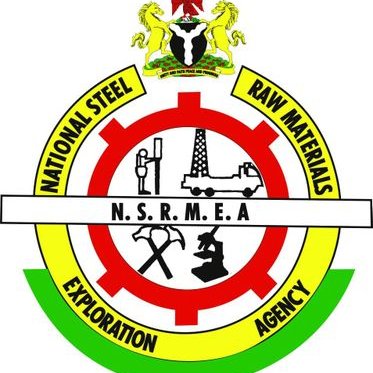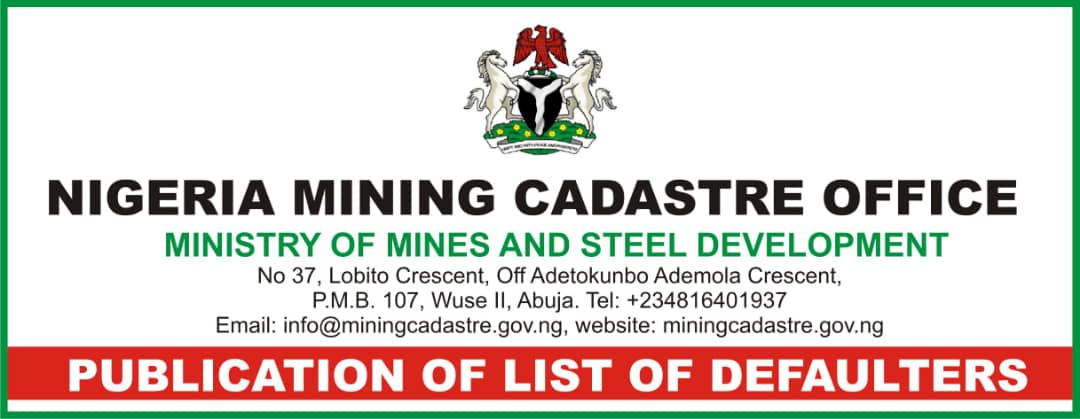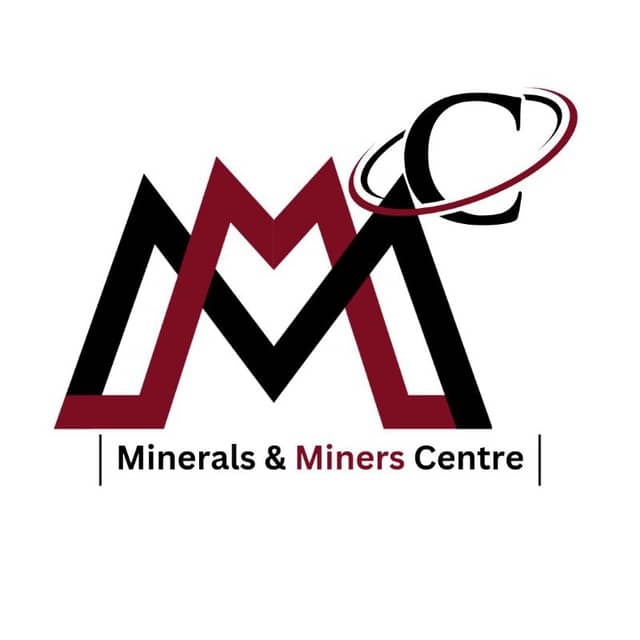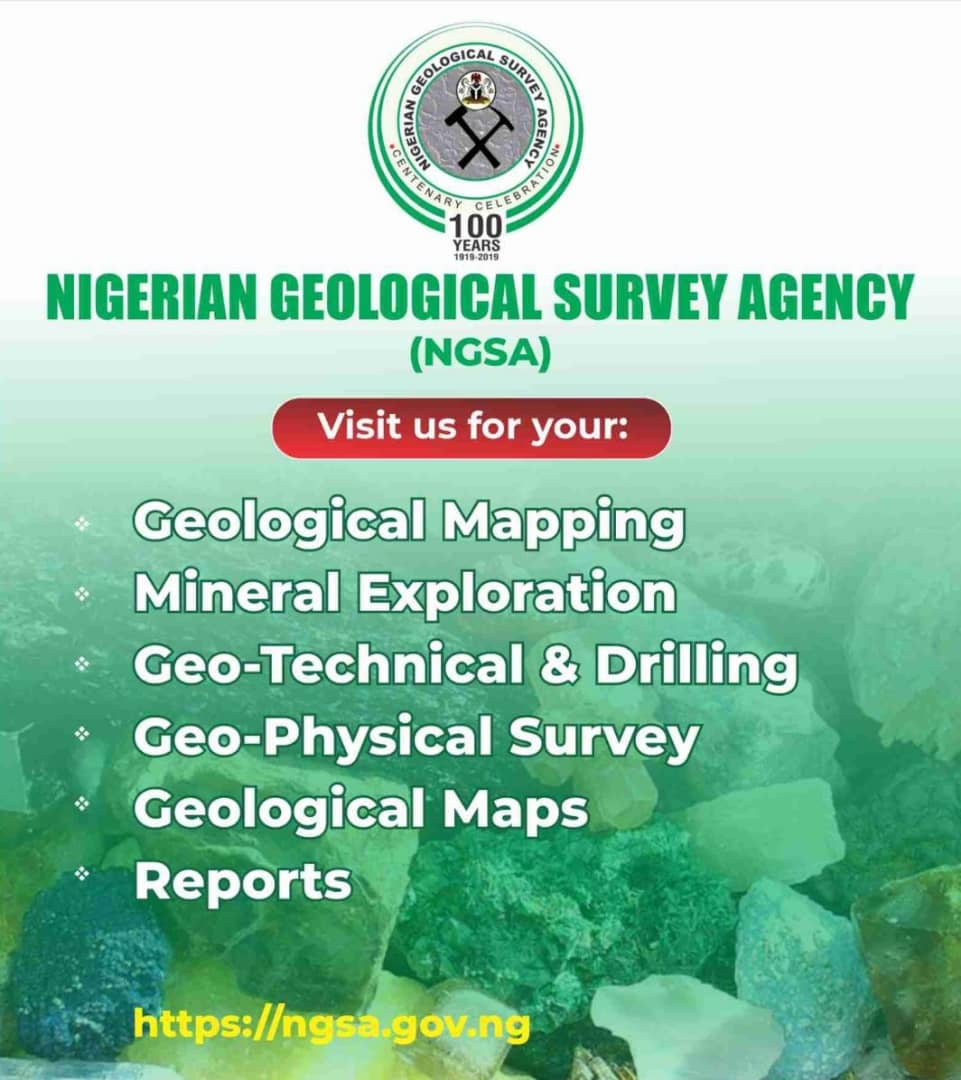
Engr. Frank Odoom is the Deputy Coordinator of the World Bank-assisted Mineral Sector Support for Economic Diversification Project, MinDiver. In this exclusive interview with Francis Kadiri, the COREN-registered engineer who stands tall for his contributions to the war against illegal mining in Nigeria, as exemplified in 2013 when he served as the Task Team Leader of the Ministerial Task Force on Illegal Mining, discusses some objectives of the project, saying that ‘apart from developing the country’s mining sector, the project will trigger economic development across sectors of the economy,’ adding that strategies are in place to ensure sustainability of achievements.
How would you describe the World Bank intervention of $150m to the Nigerian mining sector?
For decades, the Nigerian mining sector suffered from various challenges most of which have to do with lack for funds especially for the generation of geosciences data and operational expenses. Paucity of funds hindered the development of the sector such that Nigerians could not benefit from a sector that holds so much promise for them in terms of economic diversification, employment generation and wealth creation.
In what ways would the MinDiver project drive the realisation of the Roadmap for growth and development of the Nigerian mining sector?
Before the intervention of the World Bank, a Roadmap for Growth and Development of the mining sector was put in place. The roadmap is a comprehensive development plan for the Nigerian mining sector. Its set goals are being realised, judging from the impact on the Nigerian economy as published by the National Bureau of Statistics. The MinDiver project does not contradict in anyway the provisions of the roadmap, but exist to facilitate its realisation.
The Roadmap has Key Performance Indicators and timelines for achievement of set goals.
There is also the formalisation of the Artisanal and Small Scale miners into mining cooperatives for the purpose of easy management and control. As a matter of fact, this quest is spelt-out in the MinDiver project as it is in the Roadmap. So there is a very harmonious relationship between the objectives of the project and that of the Roadmap. I believe that the comprehensive nature of the Roadmap was a factor that encouraged the World Bank to grant Nigeria the facility.
It is correct to say that the MinDiver project exists to pursue the realisation of the Roadmap.
How does the project aim to improve governance of the sector?
Governance of the mining sector is a major focus of the MinDiver project.
The regulations in force came into being about a decade ago, and some provisions of this law needed to be reviewed based on realities on ground. So we will try to review aspects of the framework that needs to be reviewed as well as address other necessary challenges that have to do with governance. Across the sphere, we will do what is required to get the best results.
What in your opinion is the major hindrance to the development of the sector and how are you solving it?
Let me begin by referring to the President of the Miners Association of Nigeria, Alh. Sani Shehu. He told the audience at the MinDiver Project presentation that operators have been unable to complete their projects because they do not have the huge capital needed for exploration. MinDiver believes that it is not enough to dole out funds to operators in view of this problem. We believe that apart from supporting qualified operators, we will continue to strictly implement the Proof of Concept program, a strategy that has the capacity to professionalise the mining sector and consequently earn the confidence of the investing world. When the mining sector earns the confidence of lending houses, financial institutions will then grant loans to operators, this is how it works.
Kindly shed more light on the Proof of Concept, and how it connects to sustainability of project financing in the mining sector?
It’s a simple and transparent process. This is how it works, MinDiver calls for Expression of Interest (EOI) proposals from operators of mining projects. Our first call ushered in about two hundred and fifty responses. We evaluated the proposals by a set standard and we selected seventy. It may interest you to know that thirty have been verified awaiting final selection. This process is continuous and we will send out more calls for proposals as soon as we are done with this batch.
Our ultimate intention for this program is to assist mining projects in two ways, namely to support projects with equipment and machinery financing for optimal productivity and to support projects to enhance their geosciences data in order to increase their attractiveness to prospective investors.
What determines where a project falls under these two categories is the nature of the solid mineral deposit and its size. Basically, industrial minerals will benefit from the equipment and machinery financing while precious and base metals will benefit from assistance to improve on the geosciences data.
How would working with professionals lead to speedy recovery of the sector?
Let me begin by giving you an example. The London Stock Exchange for example insists on certified professionals to handle investment portfolios because it will guarantee world class services and also guarantee best investment returns. In the same way, a mining project endorsed by a certified mining professional will easily get the support of lending houses.
The key issue here is the high risk associated with mining projects and the level of de-risking of these projects improves their attractiveness.
So we are raising the bar by embracing this strategy. The professionals would not just be experienced, but they must have earned the certification of relevant professional institutions responsible for certification of professionals in the mining and geosciences sector.
The Council for Regulation of Engineering in Nigeria is the certifying authority for engineers in Nigeria. I am COREN-registered engineer meaning that COREN has found me worthy of being able to deliver reliable services in the field of engineering. I am also registered with the Council of Nigerian Mining Engineers and Geoscientists (COMEG).
The Proof of Concept is a strategy for value addition to the mining sector. It aims to end quackery and substandard services. You will agree that if this is done, the products would be more reliable and qualitative. There are gurus in the media who have earned the certification of relevant certifying authorities and therefore have become highly regarded assessors whose endorsements are regarded as guarantees.
The MinDiver project has decided to embrace this world class practices and I am happy that we are succeeding and we will continue to work assiduously to ensure that Nigeria becomes one of the most reliable countries where investments in mining are safe and guaranteed.
In what way can a mineral deposit be made attractive to investors?
A mineral can be developed through various pre-feasibility studies such that bankable geological data is generated from the feasibility report. When an investor is armed with a feasibility report that is endorsed by a certified professional, he will be confident to approach the bank for loan because the banks will be able to visualize the money-making opportunities of the proposed mining investment.
Banks all over the world, especially the international banks which grant loans to mining investment projects know the consultants or professionals who have earned the certification needed to authenticate feasibility reports in lieu of proposed mining investments. For this reason, mining investments have continued to thrive in those countries where professionalism has become a major part of its processes. Professionalism makes it easy for finance houses to recognise credible mining investments and they have no fear of giving out loans for pursuits of such projects.
The Proof of Concept program further seeks to reposition the mining sector by putting in place structures that will ensure sustainable borrowing from the banks even after the duration of the MinDiver project. By professionalising the sector and by pursuing valid EOIs, we will evolve a sector that will earn the confidence of lenders. When this is done, access to mining finance will be sustained. Because we are conscious of the fact that the MinDiver project has duration of five years, we decided to put in place strategies that will ensure continuity of project financing, and like I said, we are already succeeding.
So the Proof of Concept programme has the capacity to unleash the potentials of the mining sector, and it will attract funds for exploration works among other activities.
In what other ways does the Proof of Concept operate?
Once an EOI is submitted, we play our role by providing relevant information to the Nigerian Mineral Resources Decision Support System, NMRDSS. The NMRDSS is a web-based portal designed to assist investors in making decision on mining projects. It works with Geographical Information System, GIS. So we are able to create a picture of deposit of minerals in respective regions after which a consultant is engaged to recommend the best method to upgrade the available geosciences information.
At this stage of the Proof of Concept programme, we scrutinize the shortlisted companies to ascertain the veracity of their claims. This assignment has taken me to Plateau and Bauchi states, and I will be in Nassarawa and Benue states a couple of weeks from now to ensure implementation of the strategy. In pursuit of the same objective, other committee members have also visited other parts of the country on the same issue and have compiled their reports.
I am confident that the sector will deliver to the country, the promises of wealth creation.
Thank you.








